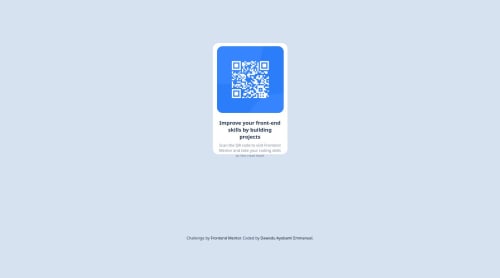Submitted over 1 year agoA solution to the QR code component challenge
Responsive barcode page using css media query and grid to solve it all
@Ayobami2411

Solution retrospective
What are you most proud of, and what would you do differently next time?
I am glad I was able to figure this project out, and create something stunning
What challenges did you encounter, and how did you overcome them?I didn't know how to align the items to the center and also I don't know how to make the item bigger than it is right now
What specific areas of your project would you like help with?making the images bigger so that there will be no need for zooming in at 100%
Code
Loading...
Please log in to post a comment
Log in with GitHubCommunity feedback
No feedback yet. Be the first to give feedback on Ayobami2411's solution.
Join our Discord community
Join thousands of Frontend Mentor community members taking the challenges, sharing resources, helping each other, and chatting about all things front-end!
Join our Discord